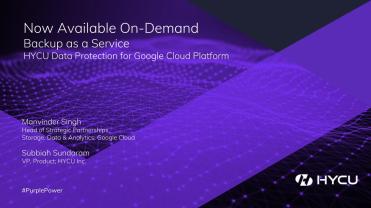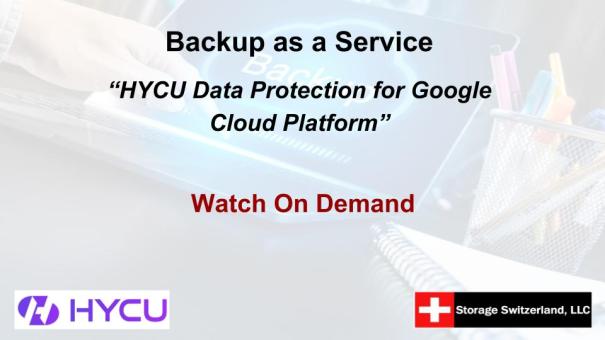Users and software vendors realize the importance of protecting cloud-native applications. While cloud providers generally do an excellent job of protecting applications from a disaster they don’t provide easy access to tools to provide point-in-time backups which are necessary to protect against user error, cyber-attack and application bugs. It is important to acknowledge that protecting those cloud-native applications is different than protecting traditional on-premises applications.
The first attribute to look for in a product to protect cloud-native applications and data is for the solution to be built specifically for that environment. Instantiating a legacy application in the cloud with all its years of code baggage is inefficient and complicates the process. Many of the capabilities that data protection requires already exists in the cloud, the software merely needs to leverage those capabilities to create point-in-time copies of data.
The second attribute to look for in a cloud-native backup application is for the solution to be offered as a service, native to the cloud on which it is running. The solution should be available through the provider’s online marketplace and requires no additional infrastructure. Some cloud application protection solutions copy data outside of the cloud provider, either on-premises or to another cloud.
The copying out of data from the provider means that the organization has to physically create infrastructure in its data center or virtually create infrastructure in another cloud provider. In either case, the customer has to manage and pay for on-premises storage and compute for the backups, or it has to pay continually for backup storage and compute at another cloud provider.
Some vendors make a case that pulling data out of the cloud to another provider protects the customer from a cloud catastrophe. Given the infrastructure and multiple locations of major cloud providers like Google Cloud, it is highly unlikely that they would lose access to all their data centers for an extended period.
The third attribute to look for is for the solution to leverage the capabilities that the provider offers. The solution should leverage the provider’s capabilities to install directly from their marketplace with no additional requirements for installations. The cloud-native solution is ready to start capturing point-in-time backups almost instantly.
The solution should also leverage the provider’s built-in snapshots. Google Cloud, for example, provides snapshot capabilities but accessing and automating them is difficult. The software should leverage Google’s existing snapshot capabilities to gain zero-impact data protection points. It should then backup up those snapshots to Google Cloud Storage Buckets. It should also leverage Google’s Identity and Access Management so the organization can control which users have access to sensitive backup information.
The goal of a cloud-native backup solution is to leverage the provider’s snapshots for zero-impact data protection and then to eliminate the impact on production load by offloading the snapshot data to the protection software’s storage bucket. If the software leverages available Google resources, then it doesn’t need agents and is guaranteed application consistency. The software should also provide the ability to extract single files from these protection images.
Conclusion
Point-in-time backups of cloud-native applications is a must have for organizations looking to host production applications in the cloud. Finding the right backup solution is a challenge as legacy vendors cobble together solutions. IT planners need to look for solutions that are themselves cloud native and leverage cloud feature sets to deliver an easy to use but a reliable point-in-time backup.



[…] via What to Look for in Cloud Native Backup — StorageSwiss.com – The Home of Storage Switzerland […]